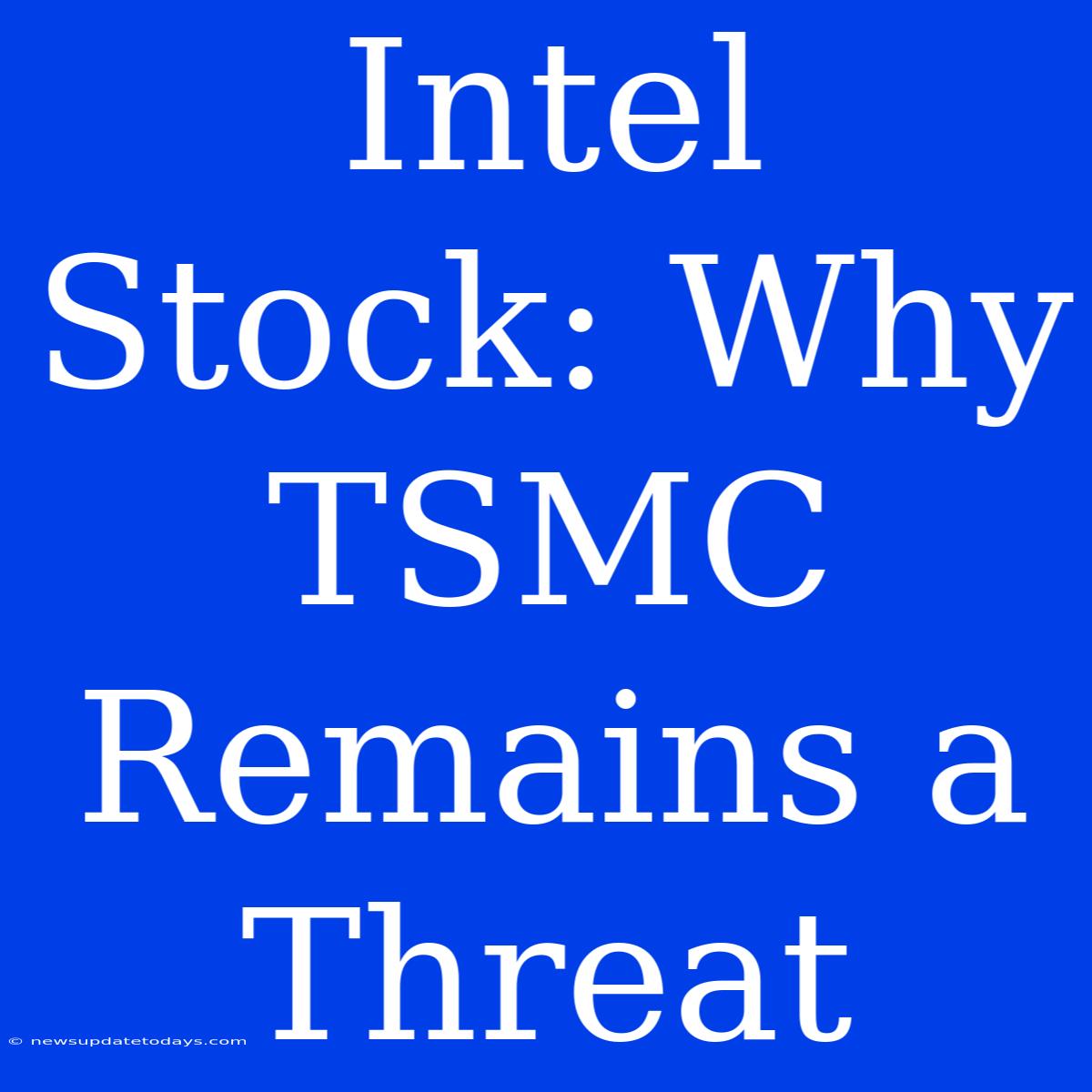Intel Stock: Why TSMC Remains a Threat
Intel's resurgence under CEO Pat Gelsinger is undeniable, but the shadow of Taiwan Semiconductor Manufacturing Company (TSMC) continues to loom large. While Intel is aggressively investing in its own manufacturing capabilities, TSMC's lead in advanced chipmaking presents a significant and persistent challenge to Intel's long-term stock performance. This article delves into the key reasons why TSMC remains a formidable threat to Intel.
TSMC's Unmatched Manufacturing Prowess
TSMC's technological edge: TSMC consistently leads in the development and mass production of cutting-edge semiconductor nodes. Their 3nm process is already in production, while Intel's 3nm technology is still in development. This technological gap translates directly into more powerful, energy-efficient chips for customers. This advantage allows TSMC to attract top-tier clients like Apple and Qualcomm, securing a dominant market share.
Economies of scale: TSMC benefits from massive economies of scale. As the world's largest dedicated independent semiconductor foundry, its production volumes are significantly higher than Intel's. This allows TSMC to spread its R&D and manufacturing costs across a broader base, resulting in lower production costs per chip. This cost advantage is difficult for Intel to match, especially given its significant investments in building new fabs.
Intel's Manufacturing Challenges
IDM 2.0 Strategy: A Steep Climb: Intel's IDM 2.0 strategy aims to regain its manufacturing leadership, but the execution presents considerable hurdles. Building new fabs and ramping up production takes time and massive capital investment. Yield improvements and overcoming initial production bottlenecks are crucial for success, but delays are possible and could impact Intel's competitiveness.
Catching Up is Expensive: Intel's aggressive investment in its manufacturing capacity is a commendable but costly endeavor. The billions spent on new facilities and equipment could strain Intel's finances, potentially impacting other areas of its business, such as R&D for its product lines. This capital expenditure pressure could impact investor confidence in the near term.
The Broader Competitive Landscape
The Foundry Model's Advantages: TSMC's foundry model allows them to serve a diverse customer base, mitigating risk. If one client's demand falls, they can easily shift production to meet other customers' needs. Intel, on the other hand, faces the challenges of balancing its own product demands with potential foundry services for external clients.
Geopolitical Factors: Geopolitical risks associated with TSMC's Taiwan location also play a role. Concerns regarding potential disruptions to the global supply chain due to geopolitical instability could indirectly benefit Intel, but the uncertainty remains a significant factor.
Conclusion: A Long-Term Battle
While Intel's ambitious plan to reclaim its manufacturing dominance is laudable, TSMC's substantial lead in process technology, economies of scale, and established relationships with major clients pose significant challenges. Intel's stock performance will heavily depend on the successful execution of its IDM 2.0 strategy and its ability to close the technological gap with TSMC. This is a long-term battle, and the outcome remains uncertain. Investors should carefully consider these factors before investing in Intel stock. The threat from TSMC is real and should not be underestimated.

